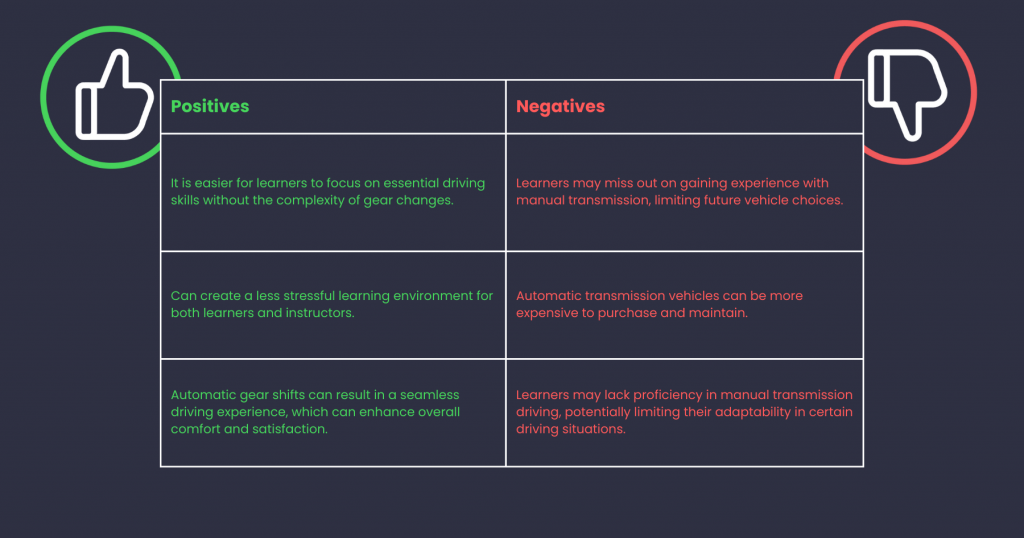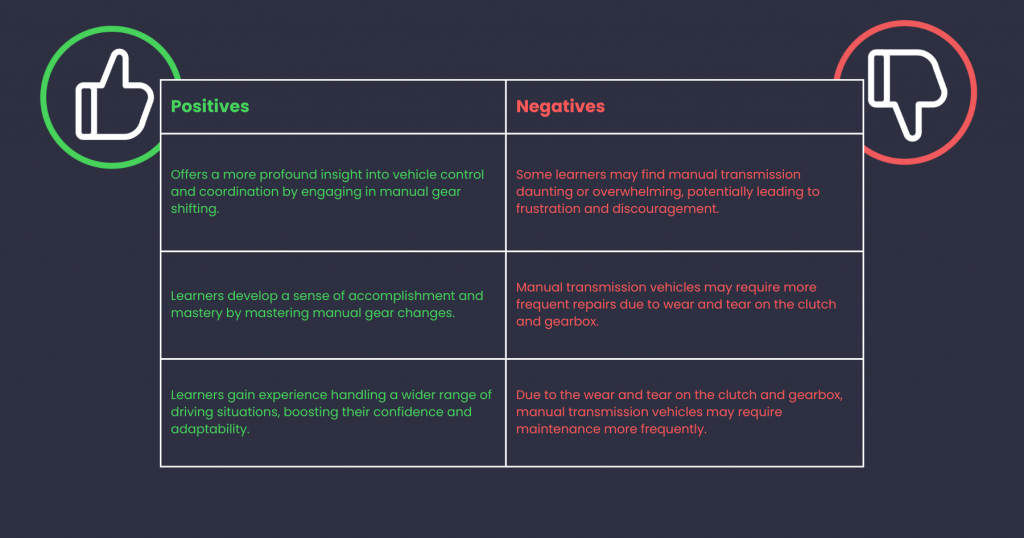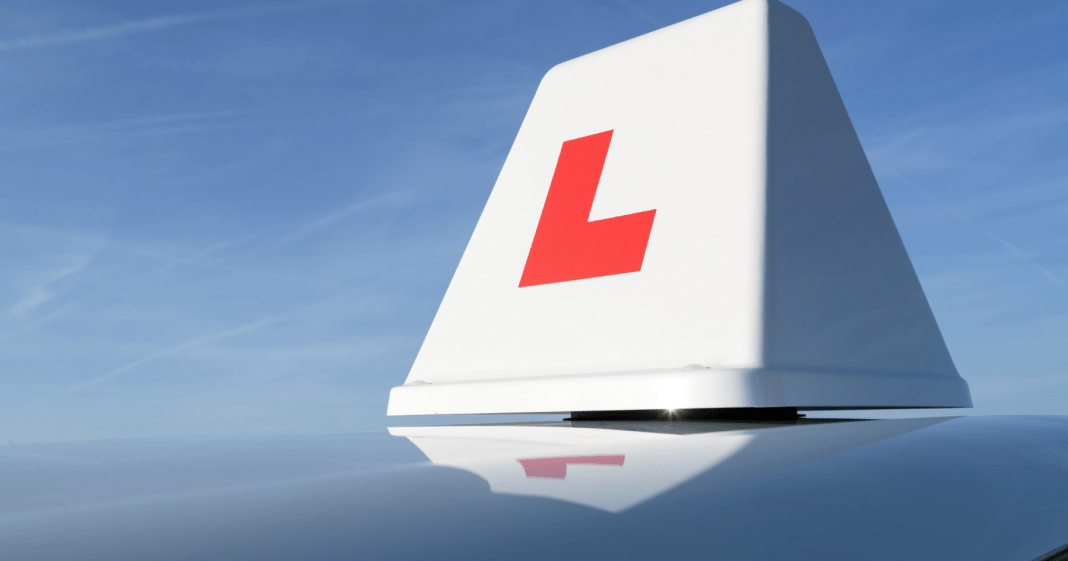Last Updated on October 31, 2024
As a driving instructor in the UK, one of the crucial decisions you will face is whether to specialise in teaching automatic or manual transmission. Both options have their pros and cons, and understanding the differences between them can help you tailor your services to meet the needs of your learners effectively.
In this blog, we’ll explore the main distinctions between teaching in an automatic and teaching in a manual car. We will also discuss the advantages and disadvantages of each, and provide insights to help you make an informed decision about which transmission type aligns best with your teaching style and business goals.

Automatic vs Manual: Teaching Transmission Types
The primary difference between automatic and manual transmission lies in the way each transmission operates. Manual transmissions demand learners actively engage with the vehicle’s mechanics, mastering the coordination of the clutch and gear stick to smoothly transition between gears. In contrast, automatic transmissions handle gear shifts seamlessly, freeing learners from the complexities of manual gear changes and enabling them to concentrate solely on mastering fundamental driving skills such as acceleration and braking.
Teaching in an Automatic Car
Teaching or driving in an automatic transmission vehicle is often seen as less intimidating for both instructors and learners alike. Without the need to manage gear changes, learners can dedicate their focus to refining critical driving abilities, such as observing traffic, anticipating potential hazards, and enhancing hazard perception. This streamlined approach allows for a smoother learning experience, fostering confidence and competence behind the wheel.

Teaching in a Manual Car
Teaching driving in a manual transmission vehicle provides learners with a comprehensive understanding of vehicle control and coordination through manual gear shifting. While mastering manual gear changes may initially seem challenging for some learners, it offers a sense of accomplishment and mastery as they gain proficiency. By focusing on the intricacies of gear shifting, learners develop crucial skills in coordination, timing, and vehicle handling, which are essential for becoming confident and competent drivers on the road.

Choosing the Best Instructor Car
When deciding whether to teach in an automatic or manual transmission vehicle, consider factors such as market demand, learner preferences, and your own expertise and comfort level with each transmission type. Offering lessons in both automatic and manual can broaden your appeal and cater to a wider range of learners with diverse needs and preferences.
Conclusion
Ultimately, the choice between teaching in an automatic or manual transmission vehicle hinges on your teaching philosophy, learner demographics, and business objectives. While automatic transmission instruction offers simplicity and ease of use, manual transmission instruction provides learners with a deeper understanding of vehicle control and flexibility in driving situations.
FAQs
Yes, many instructors choose to expand their services by offering instruction in both automatic and manual transmission vehicles to accommodate learner preferences and market demand.
The cost of driving lessons can vary depending on factors such as vehicle type, location, and instructor experience. In some cases, automatic lessons may be priced slightly higher due to the higher cost of automatic transmission vehicles and potential maintenance expenses.
While teaching in an automatic may initially limit your experience with manual transmission, instructors can acquire the necessary skills and expertise to teach manual transmission effectively through additional training and practice.
The number of driving lessons required varies for each learner and depends on factors such as previous driving experience, learning pace, and individual aptitude for driving. As an instructor, it is essential to tailor your instruction to meet the specific needs and goals of each learner.
Yes, learners often have the option to select an instructor who specialises in either automatic or manual transmission vehicles based on their personal preferences and learning objectives. Offering instruction in both transmission types can enhance your driving school’s appeal and attract a broader range of clientele.









